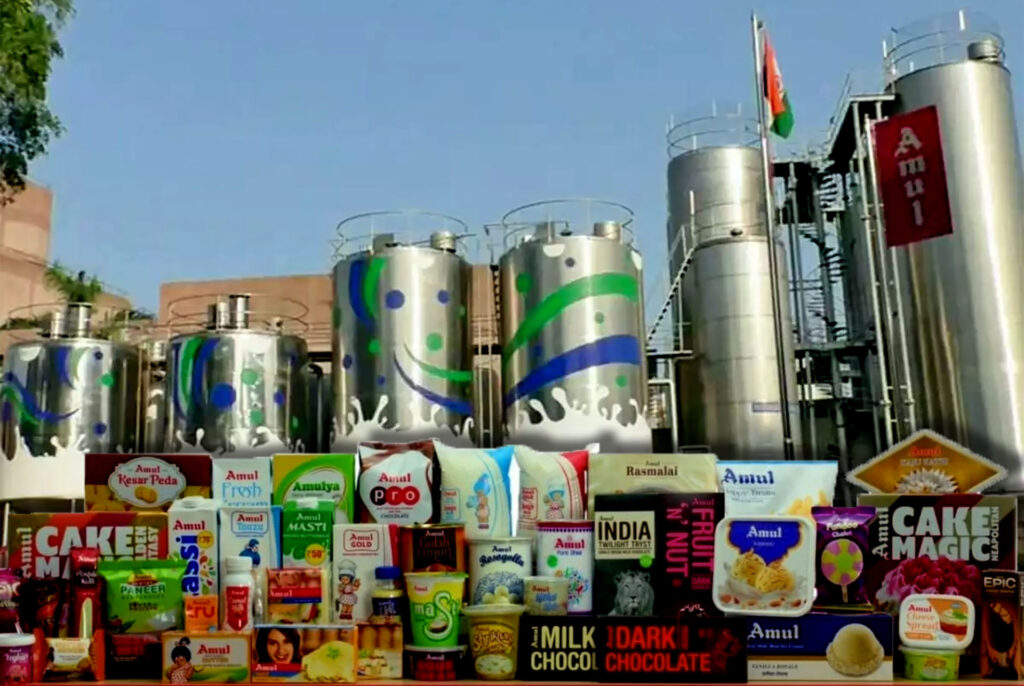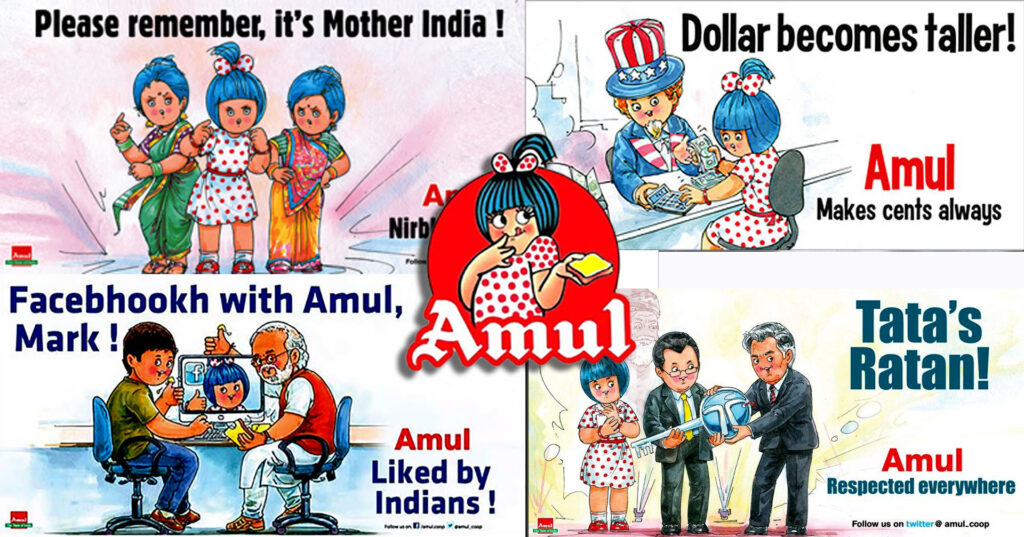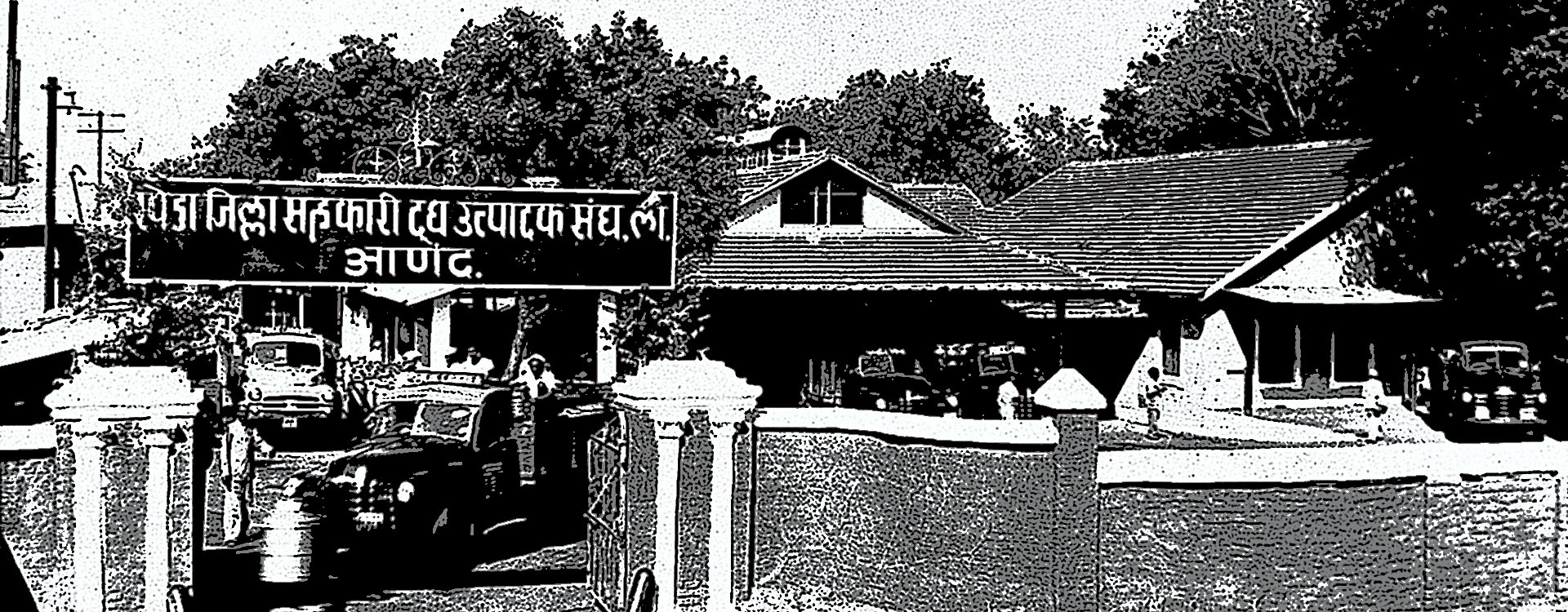“Coming together is a beginning, staying together is progress and working together is success” – Henry Ford.
The famous quote, which came from Henry Ford while he was sitting in his plush office in Michigan, United States, found its relevance in a remote village of India seven decades back. This story goes beyond a company or a brand. It is India’s inspiring narrative of resistance, empowerment, revolution, community team strength and leadership which gave rise to the 75-year-old legacy brand – Amul, the taste of India.
This historic brand, built on a basic cooperative philosophy with strong execution, is today credited for revolutionising the entire sector and a true inspiration for ‘dairy aspirants’.
Confronting the Status Quo
It all began from Anand, a small village of Kaira district in Gujarat, where dairy farmers operated at the mercy of contractors and middlemen, who controlled the milk marketing via a locally-owned diary — Polson Dairy. The farmers witnessed how they were compelled to sell their produce at throwaway prices to be further sold by Polson diary (where the milk was pasteurised) at huge profits to the Bombay (now Mumbai) government.
The discontent had been brewing for long. Fed up with the exploitation, the farmers decided to break free by taking the advice of Sardar Patel and Morarji Desai to demand to set up a cooperative society of their own. The demand was turned down by the government which led to the famous ‘milk strike’ called by farmers. Not a drop of milk was delivered across regions for almost 15 days, ultimately forcing the authorities to accept the same.
This marked the beginning of the Kaira District Co-operative Milk Producers’ Union Limited, Anand, in 1946 under Tribhuvan Das Patel, who became the founding chairman of the organisation and led it until his retirement in the 70s. It was in 1949, that late Dr Verghese Kurien arrived in Anand as a government employee to manage the dairy and stayed back to take the co-operative movement forward. More dairies were opened as the proven model of low capital requirement, short operating cycle and steady returns was replicated across various regions.
While the milk production and supply was streamlined, there was a problem of excess production which was solved by setting up a plant in 1955 to process all that extra milk into products such as milk powder and butter.
The duo was joined by dairy technologist HM Dalaya who brought in the expertise to take this proposition forward. Products like butter, cheese and baby food were churned out under the trio’s leadership besides the world’s first plant to manufacture milk powder from buffalo milk, creating history. Kaira Union introduced the brand “Amul” for marketing its product range. The brand name was handed over to The Gujarat Cooperative Milk Marketing Federation Ltd (GCMMF) in 1973. By then, Amul had become a brand name in its own right.
What began as a socio-economic movement to improve the conditions of farmers across the country led to curation of one of India’s strongest brands Amul with Dr Kurien as its captain.
“I am in the business of empowerment. Milk is just a tool in that,” said the man who revolutionised the Indian dairy industry by scripting Operation Flood. Dr Kurien served the organisation for almost 30 years before resigning from his chairmanship in 2006.
‘‘
The idea of having farmers own the brand went a long way in creating a sense of ownership and, in turn, responsibility for the product’s quality.
A ‘billion-litre’ Idea: Becoming a national ideal
GCMMF, which markets Amul milk and dairy products, had gained, and still holds, a monopoly over milk processing and distribution. It operates the country’s most modern and sophisticated dairy plant at Gandhinagar, Gujarat besides 30 other plants across Delhi/NCR region, UP, Maharashtra, Rajasthan Madhya Pradesh, Assam, Chattisgarh, Jammu and Kashmir and Jharkhand.
It sells around 4-5 lakhs litres of Ultra-high-temperature processing (UHT) milk and other value added products per day and forecasts this demand to continue growing at 25%. The UHT products have enabled Amul to position itself as the market leader in the packaged milk segment without the need of maintaining cold supply chains.
Amul’s current milk product range has some 40 products. The brand owns 85% share in the butter market, 65-66% share in cheese, 88% market share in butter, 63% share in infant milk, and 45% market share in dairy whitener. Amul products are sold in over 40 countries, some of which include the United States, Singapore, United Arab Emirates, Japan, China, etc.
Amul isn’t just a legacy. The brand is a disruptive innovator with a unique model solving purpose and profit. The idea of having farmers own the brand went a long way in creating a sense of ownership and, in turn, responsibility for the product’s quality. Branding gave a farmers’ cooperative a quasi-commercial strength, enabling it to adapt to competition. This is unlike any other corporate company in the world where the brand is owned by villagers who contribute tirelessly to their cooperative company.
The business model of the Amul is simple: sell-profit-reinvest. Amul was a three-tier cooperative structure:
● At the village level, there are cooperative societies producing milk.
● At the district level, there are milk unions with processing centres.
● At the state level, there are milk federations responsible for consolidation.
The end price of Amul products are decided by GCMMF and marketed further.
This transparent model leads to maximum returns for the suppliers – the farmers, who get remunerative prices for the milk sold besides a share in the company’s profit at the end of the year.
The earnings from the sale of all the products are plugged back into the production, eliminating all the intermediaries. Hence, sell-profit-reinvest. This makes Amul the brand name of 2 million farmers. Having no owner makes the Amul saga special and unique.

Seeping Into the ‘Dairy’ Routine
Faith and trust is not an overnight job. It would come from decades of consistent messaging. This brings us to the key ingredient to Amul’s success — consumer trust. Consumers have blind faith in Amul. They know this brand will not cheat them in any way. The perception of the brand is such that it is consumed by a millionaire living in a big city as well as by an autorickshaw driver in a small town.
This is the reason why it doesn’t believe in market segmentation, the opposite of what is interestingly taught in B-schools’ books. How has this trust been built? The foremost reason being the sheer quality and authenticity of the products. Besides being the best-in-class, the products are affordable which has helped the brand seep into almost every households’ kitchen. It has been offering value for money since the very beginning when consumer’s had a limited purchasing power. Its unique transparent model with a strong distribution strategy helps it keep the pricing low.
Despite competition in the high value dairy product segments from firms such as Hindustan Lever, Nestle and Britannia, GCMMF ensures that the product mix and the sequence in which Amul introduces its products is consistent with the core philosophy of providing its product, say butter, at a basic, affordable price to appeal the common masses. This helped the product to create its brand image in the household sector of the society.
Amul’s Contemporary Twist
Another reason for the huge success of Amul as a brand is its diversification into numerous dairy products. This brings out a very important aspect of the brand which has managed to keep up with the changing trends and market demand over the years and placed its products smartly on the shelves.
In 2010, RS Sodhi, who had worked with the company for almost 30 years, was promoted to managing director. The period was crucial as the dairy giant was beginning to lose its touch in the market and going into a hibernation mode. It was time to wake up the giants.
Sodhi applied changes across the supply chain, exports markets and new launches which made Amul grow 2.5x in 5 years (2015), the most in its entire history. This was evolution of Amul 2.O, with a contemporary twist. From ice-creams to mozzarella cheese, Amul has built a diversified product range besides its usual anchor products —milk, butter, curd and paneer, which are its cash cows as they drive the bulk of revenue and profits. In FY19, Amul launched value-added products such as flavoured milk, camel milk, fruit based Amul Tru (combo of milk and fruit) and new range of kulfis. It also launched the Happy Treats brand with products such as french fries, aloo tikki and hash brown.
By the early 2000s, Amul had launched ‘Real Ice-cream’, branded yoghurt, mozzarella cheese, coffee products, tapping into the growing and changing consumer demand. It has been constantly innovating and investing its branded dairy product portfolio along with adjacent food categories. It plans to expand its presence in packaged sweets beyond Gulab Jamun and Rasmalai. It also entered the branded edible oils segment last year with its launch of ‘Janmay’ brand with five variants.
However, it is not that all its products have been well-perceived. For instance, Amul chocolate and pizzas have failed to penetrate the markets, including international.
Despite these glitches, Amul is a winner in each and every category on Indian dairy business—revenue generation, turnover, product categories—Amul beats its deep advertising pocketed-competition by a huge margin. This has been made possible with the brand’s penchant for quality at affordable prices.
‘‘
Amul has been offering value for money since the very beginning when consumer’s had a limited purchasing power. Its transparent model with strong distribution strategy helps it keep pricing low.
Staying Ahead in the Game: Tackling Competition
One of the main reasons why Amul has secured its standing in the overall dairy market against its competitors is its large audience. Amul is perceived more as a local brand in various regions of India. Instead of competing with national or international brands, it focuses on local and hyper-local markets.
Also, this line between a local and an international brand has faded over the years with both occupying the front shelves with equal weightage. The preference of the former over the later has changed. Rather, consumers seek local brands, which are at par with international brands in terms of quality, pricing and ingredients. In this scenario, Amul fits all categories.
It is perceived as a brand of ‘my region’ or ‘my city’. Therefore, its competition is not multinational brands but regional and city brands. Even premium products like cheese are not restricted to urban markets anymore.
The rural consumer wants to buy the same but in a smaller pack size and Amul has tapped this opportunity at the back of its humongous processing capacity and distribution team, which is ever-growing.
‘Taste of India’, and the World
Amul started shifting its focus towards the international market around 2008 to fuel its revenue growth with packaged consumer products (butter, cheese, ghee) and commodities (milk powder and white butter). The confident move was backed by the trust it had built over the years.
In 2016, Amul partnered with Amazon to cater to the demand for ghee of the overseas audience. To scale the business, Amul began to set up production facilities abroad (US and European market) for ghee, shrikhand and other products.
The results were extremely positive reflected in its growing exports numbers. This strategy helped Amul outpace global FMCG brands like Unilever and P&G which had a growth rate of 6-7%, in contrast with 20% CAGR of Amul, between 2010 and 2017.

The ‘Utterly Butterly’ Genius Idea: Iconic Amul Girl
Amul is available, affordable and visible ! Amul’s branding game has been extremely strong, yet simple. It is inspiring to see how ‘Taste of India’ and ‘Amul Doodh Peeta hai India’ brought in the sense of nationalism in them and became an ideal.
This brings us to the brand’s lucky charm — The Amul Girl, who is 56 years old today and hasn’t aged a day! The little girl in a polka-dot dress, long lashes, blue hair and a ribbon has managed to steal everyone’s heart with her innocence, without polarising her audiences. Even Prime Minister Narendra Modi didn’t shy away from thanking the brand for its humour in 2018, when the little girl wished him birthday.
The (original) Amul Girl was created by creative head Sylvester daCunha (daCunha Communications) and art director Eustace Fernandes, with the suggestions of Dr Kurien in 1966. The creation was later taken over by his son Rahul da Cunha in 1994, who along with copy writer Manish Jhaveri and Jayant Rane, the artist, have been keeping the magic alive.
The mascot has remained relevant even to date. Reason — It connects everyone. Some people connect with satire, some with politics, some with humour, some with celebrities and so on. Amul found a common ground with its mascot, which remained consistent and crisp all these years. The narrative continues to be current and contextual displayed in a way that has always captured the imagination and attention of every Indian irrespective of age, gender, or religion.
The brand’s overall advertising cost is merely 1-4% of its revenue unlike other brands who have around 20-30% of revenue as their ad-spend budget. Amul has stood strong on its umbrella branding-meaning, it markets all its products under a single name which leads to this low costing.
Besides the traditional newspaper advertising and hoardings, the brand has been balancing the new-age digital medium with fresh creatives. However, it still holds its strength and belief in the former and rightly so. It rather uses its social media for listening to its customers and solving their queries.
Amul’s brand story is inspiring in every way. Even today, despite being the dairy king, it refuses to rest its laurels with new innovations, tech penetration, even more robust supply chains and ever growing distribution channels. It is a true remarkable story of a traditional cooperative model in today’s tech-driven global system.




